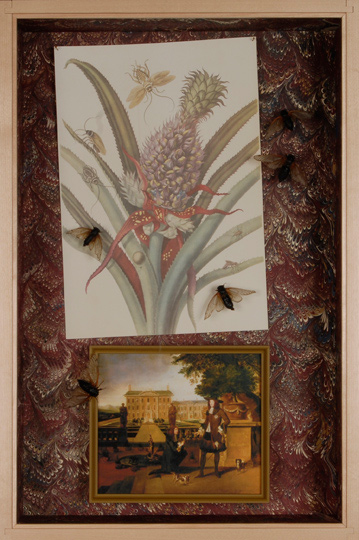

Maria Sibylla Merian traveled to the Dutch colony of Surinam in South America in 1699 to study indigenous insects. Engravings were made from her original watercolors that illustrated the insects in different stages of development with the plants they ate. In addition to its contributions to entymology, her book also helped introduce unknown foods, including the pineapple, to Europe.
The pineapple held such prestige that King Charles commissioned a painting to commemorate the first pineapple grown in England. The royal gardener, John Rose, is pictured presenting the prized fruit to the king